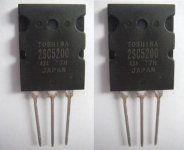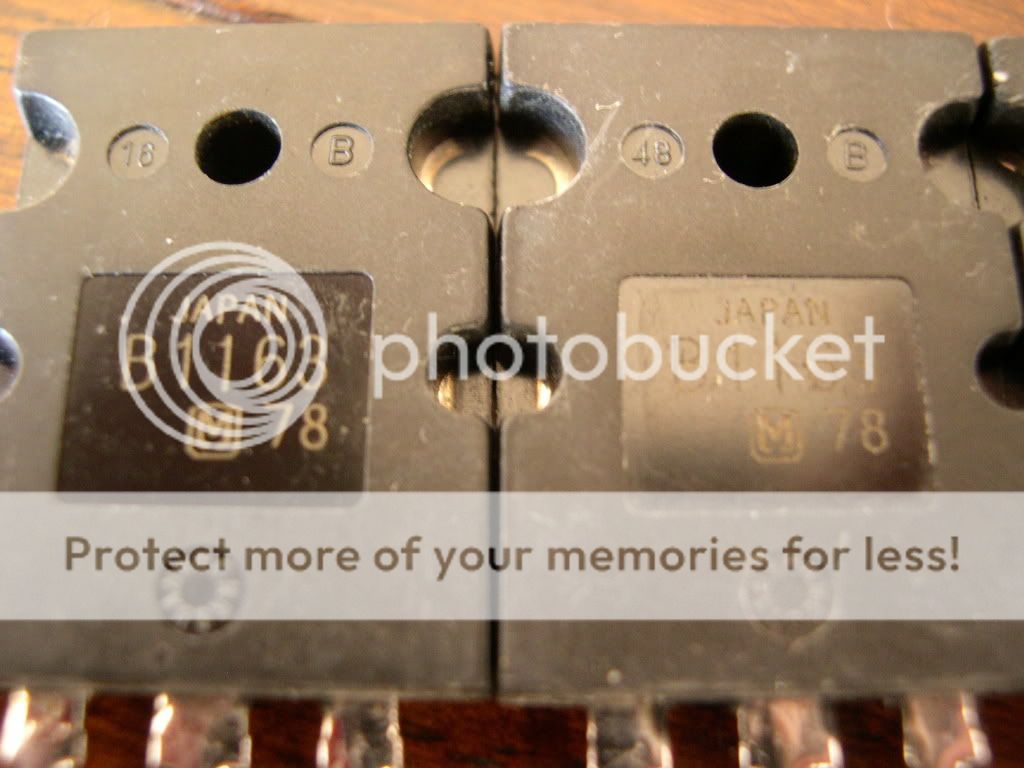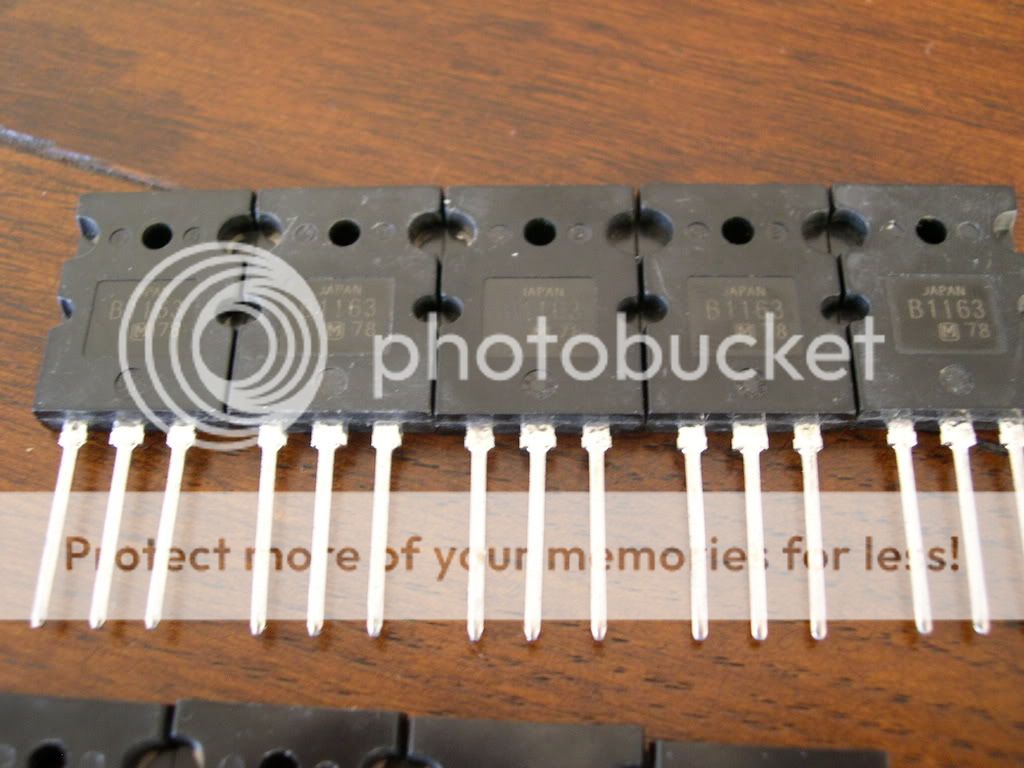Die-sizes and capacitances may be a useful way to distinguish counterfeit and genuine power devices, but it's practically useless for small-signal transistors with Cob ranging from 2pF to maybe 25pF. These transistors have die-sizes that are practically identical to a generic BC547 or similar that costs 1/20th the price., but with superior specs for Vceo, fT, Ic, Cob, NF, etc., none of which are trivial to test, especially if you're buying over-the-counter, retail.
Fake Transistors
Gentleman:
Most of the fake transistors like 2sc5200, ----- were all came from China, they were a enormous manufacturer in fake trans. Even on IC, they were/are also a big manufacturer. They sold/sell these junks all over the world with a low cheap price, but the retailer resell them with a nice profit. Don't blame the seller, but do blame the manufacturer.
Gentleman:
Most of the fake transistors like 2sc5200, ----- were all came from China, they were a enormous manufacturer in fake trans. Even on IC, they were/are also a big manufacturer. They sold/sell these junks all over the world with a low cheap price, but the retailer resell them with a nice profit. Don't blame the seller, but do blame the manufacturer.
AndrewT said:Hi,
an electrical test to destruction would have been more informative.
1.0A into a medium heatsink and ramp up the Vce voltage, waiting for thermal stabilty and see how far into second breakdown the device could survive. Final temp measurement would allow comparison to the de-rated DC SOA. But too late.
Hi Guys,
I am about to buy some 2sc5200/2sa1943 .
I have read this thread ( and others ) and I think I know how to spot the fakes.
I don't want to put them in my amp. and then have them selfdestruct taking the rest of the amp with them.!!
Is there a 'simple'method to check them out?
I don't have a capacitance meter but I do have a variable HT supply, a high current low voltage supply and meters, etc.....
Can I bolt one to a heatsink and power it up to check??
Thanks
And
Is there a 'simple'method to check them out?
I don't have a capacitance meter but I do have a variable HT supply, a high current low voltage supply and meters, etc.....
Can I bolt one to a heatsink and power it up to check??
You can do as AndrewT suggested. But, if you want to use the transistor afterwards, be sure to stay within it's SOA (safe operating area); don't drive into second breakdown. However, if you have a spare you can destroy, you can see how much it can take before it pops.
linuxguru said:.............. the font is slightly wrong, and it's too easy to read. .............
My thoughts exactly !!!
Are the copiers getting smarter? No shiny square box for the writing.
I will have to Break one open.
Andy
Maybe a superfluous question, but can't you simply use a different transistor, like MJL21194 and MJL21193? I Don't know if they match, but an alternative pair should be available for those Toshiba devices. The problem with Toshiba is, that they are the most faked devices.
The Toshiba c5200/a1943 have very nice specs, while being relatively inexpensive (~$1 each in volume). In particular, !c vs. Ib is very flat for high values of Ic, and fT is ~30 MHz. The only other manufacturer who makes parts that are as good is Sanken, and Sanken counterfeits are even more prevalent than Toshiba.
Re: Re: My Transistors, original or copy?
I used to probe wafers of all semiconductor types, as well as waffle packs. I do not recall ever finding a date or lot code on any device ever.
Glob top is used to coat the die and prevent contamination from reaching the die surface, and also to buffer the die and wire bonds from the encapsulation plastic difference in expansion coefficients. I used black, knew of a grey one, but see no reason white is excluded.
The excess solder could be one of several reasons. I've had dice with poor backside metalization, and that would require more solder to consume the bad metal to get to the good.
Sometimes it is more convenient to use an existing large solder preform than it is to stock a smaller one, the excess solder doesn't really hurt anyone.
Sometimes, the pick and place machine gets two preforms stuck together, and uses it anyway.
Cheers, John
PB2 said:I'm not certain that lot codes and date codes are on the die, can anyone confirm this?
I used to probe wafers of all semiconductor types, as well as waffle packs. I do not recall ever finding a date or lot code on any device ever.
Eva said:The way in which that die is attached to the copper tab seems quite strange to me. Genuine devices shouldn't have any kind of substance around the die, either white or transparent. Also, genuine devices shouldn't have lots of solder around the die as if it was soldered by hand there. I know that this picture is not yours and is taken from Elliot's site, where he believes it to show a genuine device, but I'm in doubt.
Glob top is used to coat the die and prevent contamination from reaching the die surface, and also to buffer the die and wire bonds from the encapsulation plastic difference in expansion coefficients. I used black, knew of a grey one, but see no reason white is excluded.
The excess solder could be one of several reasons. I've had dice with poor backside metalization, and that would require more solder to consume the bad metal to get to the good.
Sometimes it is more convenient to use an existing large solder preform than it is to stock a smaller one, the excess solder doesn't really hurt anyone.
Sometimes, the pick and place machine gets two preforms stuck together, and uses it anyway.
Cheers, John
- Home
- Design & Build
- Parts
- My Transistors, original or copy?




